Permaculture companion plants for Chives
| Image | Name | Data | Description | Actions |
|---|---|---|---|---|
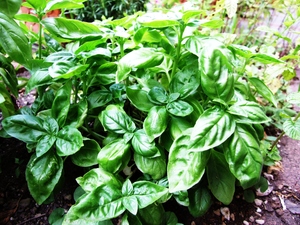
|
Basil |
5-10
Annual, Perennial
Full sun
Moist
Light (sandy), Medium
0.5
Herbs
true
Leaves, Seed
Seed - direct sow
https://en.wikipedia.org/wiki/Basil
Fast
Common basil, Thai basil, Tropical basil
Lamiaceae or labiatae
Basilikum
https://pfaf.org/User/Plant.aspx?LatinName=Ocimum basilicum
Start indoors from late february to mid-summer
Can be grown in containers
1.1
Andaman Is., Assam, Bangladesh, Bismarck Archipelago, Borneo, Cambodia, China South-Central, China Southeast, East Himalaya, India, Jawa, Laos, Lesser Sunda Is., Malaya, Maluku, Myanmar, Nepal, New Guinea, Nicobar Is., Philippines, Queensland, Sri Lanka, Sulawesi, Sumatera, Taiwan, Thailand, Vietnam, West Himalaya, Western Australia
Angola, Bahamas, Benin, Bolivia, Brazil Southeast, Bulgaria, Burkina, Burundi, Cameroon, Canary Is., Cape Provinces, Cape Verde, Caroline Is., Cayman Is., Central African Repu, Chad, Colombia, Comoros, Congo, Cook Is., Cuba, Dominican Republic, East Aegean Is., Ecuador, El Salvador, Eritrea, Ethiopia, Fiji, Gabon, Gambia, Ghana, Gilbert Is., Guatemala, Guinea, Guinea-Bissau, Gulf of Guinea Is., Haiti, Hawaii, Honduras, Illinois, Ivory Coast, Jamaica, Kazakhstan, Kenya, Laccadive Is., Leeward Is., Liberia, Line Is., Madagascar, Malawi, Maldives, Mali, Marianas, Marquesas, Marshall Is., Mexico Central, Mexico Gulf, Mexico Northeast, Mexico Northwest, Mexico Southeast, Mexico Southwest, Mongolia, Mozambique, Nauru, New Caledonia, New York, Nicaragua, Niger, Nigeria, Niue, Oman, Panamá, Primorye, Puerto Rico, Romania, Samoa, Senegal, Sierra Leone, Society Is., South Australia, South European Russi, Sudan, Tanzania, Tokelau-Manihiki, Tonga, Trinidad-Tobago, Tuamotu, Uganda, Ukraine, Venezuela, Venezuelan Antilles, Wallis-Futuna Is., Windward Is., Xinjiang, Zambia, Zaïre, Zimbabwe
After last frost date
15cm
https://powo.science.kew.org/taxon/urn:lsid:ipni.org:names:452874-1
Condiment, Drink, Tea
Essential Oil, Strewing, Fragrance
|
Basil (Ocimum basilicum) is a herb native to tropical regions of Asia and Africa. It is known for its fragrant, green leaves and small, white flowers. The leaves are typically oval-shaped and have a glossy texture. The stem is typically square-shaped and can grow up to 24 inches tall. Basil is a fast-growing plant that prefers full sun and well-drained soil. In colder climates, it is typically grown as an annual, as it is not winter hardy. To cultivate basil successfully, a grower should water it regularly and provide adequate drainage. Removing the last pair of leaves encourages branching and growth. Basil is often differentiated from other plants by its distinctive aroma, which is used in a wide variety of dishes, including pesto, soups, and salads. The leaves, flowers, and stems of the basil plant are all edible, and can be stored by drying or freezing. In addition to its culinary uses, basil has a number of other uses. It has been used medicinally as an anti-inflammatory and to improve digestion. It is also known to attract bees and other pollinators, making it valuable for gardens. |
Show
Edit |

|
Carrot |
3-10
Biennial
Full sun
Moist
Light (sandy), Medium, Heavy (clay)
1.2
Leaves, Root
Apiaceae or Umbelliferae
Möhre, Karotte
https://pfaf.org/User/Plant.aspx?LatinName=Daucus carota sativus
Afghanistan, Albania, Algeria, Austria, Azores, Baleares, Baltic States, Belarus, Belgium, Bulgaria, Canary Is., Cape Verde, Central European Rus, China South-Central, China Southeast, Corse, Cyprus, Czechoslovakia, Denmark, East Aegean Is., East European Russia, Eritrea, Ethiopia, France, Germany, Great Britain, Greece, Hungary, Iran, Iraq, Ireland, Italy, Kazakhstan, Kirgizstan, Kriti, Krym, Lebanon-Syria, Libya, Madeira, Morocco, Nepal, Netherlands, North Caucasus, Northwest European R, Norway, Pakistan, Palestine, Poland, Portugal, Romania, Sardegna, Sicilia, South European Russi, Spain, Sweden, Switzerland, Tadzhikistan, Transcaucasus, Tunisia, Turkey, Turkey-in-Europe, Turkmenistan, Ukraine, Uzbekistan, West Himalaya, Yugoslavia
Alabama, Amsterdam-St.Paul Is, Andaman Is., Angola, Argentina Northeast, Argentina Northwest, Argentina South, Arizona, Arkansas, Bangladesh, Brazil South, British Columbia, California, Cape Provinces, Chile Central, Chile South, China North-Central, Colorado, Connecticut, Costa Rica, Cuba, Delaware, Desventurados Is., District of Columbia, Dominican Republic, Easter Is., Ecuador, El Salvador, Finland, Florida, Georgia, Guatemala, Hainan, Haiti, Iceland, Idaho, Illinois, India, Indiana, Inner Mongolia, Iowa, Jamaica, Japan, Jawa, Kansas, Kentucky, Kermadec Is., Korea, Labrador, Leeward Is., Louisiana, Maine, Manchuria, Manitoba, Marianas, Marshall Is., Maryland, Massachusetts, Mauritius, Mexico Central, Mexico Northeast, Michigan, Minnesota, Mississippi, Missouri, Mongolia, Montana, Myanmar, Nebraska, Nevada, New Brunswick, New Hampshire, New Jersey, New Mexico, New York, New Zealand North, New Zealand South, Newfoundland, Nicobar Is., North Carolina, North Dakota, North European Russi, Northern Provinces, Nova Scotia, Ohio, Oklahoma, Ontario, Oregon, Pennsylvania, Peru, Primorye, Prince Edward I., Puerto Rico, Qinghai, Québec, Rhode I., Rodrigues, Réunion, Saskatchewan, South Carolina, South Dakota, Sri Lanka, Sudan, Tasmania, Tennessee, Texas, Tibet, Trinidad-Tobago, Uruguay, Utah, Vermont, Vietnam, Virginia, Washington, West Siberia, West Virginia, Wisconsin, Wyoming, Xinjiang
0.20
https://powo.science.kew.org/taxon/urn:lsid:ipni.org:names:841063-1
Coffee, Colouring, Condiment
Alcohol, Dye, Essential Oil, Dynamic accumulator, Fragrance
true
|
Carrot (Daucus carota sativus) is a type of root vegetable that is native to Europe and Asia. It belongs to the family Apiaceae, which includes around 300 species of plants. Carrots are a popular crop, known for their sweet, crunchy roots and vibrant orange color. The plant has a tall, slender growth habit and can reach a height of up to 2-3 feet. The leaves are green and feathery, and the flowers are small and white or purple in color. To grow carrots successfully, it is important to choose a location with well-drained, sandy soil and full sun. The plant prefers cool temperatures and should be protected from frost. Carrots can also be grown in containers, and will benefit from regular watering and fertilization. The plant is relatively easy to grow and requires little maintenance, but can be susceptible to pests and diseases, such as carrot fly and root rot. Carrots are a valuable source of vitamins and minerals, and are used in a variety of dishes, including soups, stews, and salads. The roots can be eaten fresh or cooked, and can be stored in the refrigerator for several weeks. In addition to their culinary uses, carrots have a number of medicinal properties, and have been used to treat a variety of ailments, including indigestion, constipation, and respiratory disorders. Carrots are also a valuable food source for many types of wildlife, including birds, insects, and small mammals. The flowers attract bees and other pollinators, and the roots are eaten by animals such as rabbits and deer. |
Show
Edit |

|
Sweet cherry |
3-7
Perennial
Full sun, Partial sun/shade
Moist
Light (sandy), Medium, Heavy (clay)
Deciduous
18.0
Trees
Dye, Gum, Tannin, Lumber, Espalier
true
Fruit, Seed
https://en.wikipedia.org/wiki/Prunus_avium
Fast
Sweet cherry
Rosaceae
Süßkirsche
https://pfaf.org/User/Plant.aspx?LatinName=Prunus avium
183
Afghanistan, Albania, Algeria, Austria, Belarus, Belgium, Bulgaria, Corse, Cyprus, Czechoslovakia, Denmark, France, Germany, Great Britain, Greece, Hungary, Iran, Ireland, Italy, Krym, Libya, Morocco, Netherlands, North Caucasus, Norway, Poland, Portugal, Romania, Sardegna, Sicilia, Spain, Sweden, Switzerland, Transcaucasus, Tunisia, Turkey, Turkey-in-Europe, Ukraine, Yugoslavia
Arizona, Baleares, Baltic States, British Columbia, California, Central European Rus, Connecticut, Delaware, District of Columbia, East European Russia, East Himalaya, Finland, Idaho, Illinois, Indiana, Kazakhstan, Kentucky, Korea, Maine, Maryland, Massachusetts, Michigan, New Brunswick, New Hampshire, New Jersey, New Mexico, New South Wales, New York, New Zealand North, New Zealand South, North Carolina, Nova Scotia, Ohio, Ontario, Oregon, Pakistan, Pennsylvania, Rhode I., South Australia, South Carolina, South European Russi, Tadzhikistan, Tennessee, Turkmenistan, Utah, Victoria, Virginia, Washington, West Himalaya, West Virginia, Wyoming
3
https://powo.science.kew.org/taxon/urn:lsid:ipni.org:names:30093848-2
Gum
|
The sweet cherry, Prunus avium, is a fruit-bearing tree that is native to Europe, western Asia, and northern Africa. It typically grows to a height of 15-30 feet, with a spread of 20-25 feet, and has a rounded crown. The leaves are oblong-shaped, with serrated edges and a glossy dark green color. The flowers are white or pale pink, with five petals, and appear in clusters in the spring before the leaves. The fruit, which is the sweet cherry, is a small, round drupe, with a smooth, dark red or black skin and a juicy, sweet flesh. In terms of growing conditions, the sweet cherry prefers well-drained, fertile soil and full sun exposure. It can be grown in a variety of climates, but may require protection from frost in harsh climates. To cultivate the sweet cherry successfully, a grower may need to prune the tree to maintain its shape, provide adequate water and fertilizer, and protect the tree from pests and diseases. The sweet cherry is edible and can be eaten fresh or used in a variety of culinary dishes. The fruit can be stored in the refrigerator for a few days or preserved by freezing or canning. The sweet cherry is also valued for its medicinal properties, as the fruit and leaves have been used in traditional medicine to treat a variety of ailments. In terms of its value for wildlife, the sweet cherry provides food for a variety of animals, including birds, squirrels, and other small mammals. It also provides shelter and habitat for these animals. |
Show
Edit |

|
Peach |
5-9
Perennial
Full sun
Moist
Light (sandy), Medium, Heavy (clay)
6
Trees
true
Flowers, Fruit, Seed
https://en.wikipedia.org/wiki/Peach
Fast
Flowering peach, ornamental peach, common peach
Rosaceae
Pfirsich, bergpfirsich, tellerpfirsich, saturnpfirsich, weinbergpfirsich
Oil, Gum, Tea
https://pfaf.org/User/Plant.aspx?LatinName=Prunus persica
China North-Central
Afghanistan, Alabama, Argentina Northwest, Arizona, Arkansas, Assam, Baleares, Bulgaria, California, Cape Verde, China South-Central, China Southeast, Colorado, Connecticut, Corse, Cyprus, Delaware, District of Columbia, East European Russia, East Himalaya, Ecuador, El Salvador, Ethiopia, Florida, France, Free State, Georgia, Greece, Hungary, Idaho, Illinois, India, Indiana, Iowa, Iran, Italy, Japan, Kansas, Kazakhstan, Kentucky, Kenya, Kirgizstan, Korea, Kriti, Krym, KwaZulu-Natal, Laos, Libya, Louisiana, Maine, Marianas, Maryland, Massachusetts, Mauritius, Michigan, Mississippi, Missouri, New Jersey, New Mexico, New South Wales, New York, New Zealand North, North Carolina, North Caucasus, Northern Provinces, Nova Scotia, Ohio, Oklahoma, Ontario, Oregon, Pakistan, Pennsylvania, Portugal, Queensland, Rhode I., Rodrigues, Romania, Réunion, Sardegna, South Australia, South Carolina, South European Russi, St.Helena, Switzerland, Tadzhikistan, Tennessee, Texas, Transcaucasus, Turkey, Turkmenistan, Ukraine, Utah, Uzbekistan, Vietnam, Virginia, West Himalaya, West Virginia, Wisconsin
3
https://powo.science.kew.org/taxon/urn:lsid:ipni.org:names:1212858-2
Adhesive, Cleanser, Dye, Gum, oil, Espalier
|
The peach, scientifically known as Prunus persica, is a deciduous tree native to northwest China. It typically grows to be about 10-30 feet tall, with a short trunk and a rounded crown. The leaves are oval-shaped, with serrated edges and a glossy, dark green color. The flowers are pink and white, with five petals each. Peaches are known for their fuzzy, peach-colored skin and juicy, sweet flesh. They can be eaten fresh, canned, or cooked into dishes such as pies and cobblers. The edible parts of the peach include the flesh and the seed, which contains a small kernel that can be ground into flour. Peaches can be stored after harvest by keeping them in a cool, dry place. Peaches prefer well-draining, loamy soil and full sun. They can be grown in a variety of climates, but do best in warm, temperate regions. To cultivate peaches successfully, growers may need to provide support for the trees, prune them regularly, and protect them from pests and diseases. Peaches are generally winter hardy, but can be damaged by frost. In addition to being eaten fresh, peaches have a variety of uses. The flowers can be used in herbal teas, and the leaves can be used to make a yellow dye. The wood of the tree can be used for smoking meat, and the kernels can be used to make oil. Peaches are also a valuable food source for wildlife, attracting birds, squirrels, and other animals. |
Show
Edit |

|
Nectarine |
4-8
Perennial
Full sun
Moist
Light (sandy), Medium, Heavy (clay)
Deciduous
6.0
Trees
Adhesive, Cleanser, Dye, Gum, oil, Espalier
true
Flowers, Fruit, Seed
Rosaceae
Nektarine
Oil, Gum, Tea
https://pfaf.org/User/Plant.aspx?LatinName=Prunus persica nucipersica
Nectarine
Nektarin
3
|
Nectarine (Prunus persica nucipersica) is a plant that is a type of stone fruit. It is native to China and is closely related to the peach. Nectarines are similar in appearance to peaches, but have smooth skin rather than fuzzy skin. They can range in size from small to large and are typically round or oval in shape. Nectarines have green or red leaves and white or pink flowers. The stems of the plant are generally thin and have thorns. Nectarines can grow to be quite large, reaching heights of up to 8 meters. They grow best in warm, sunny climates and well-drained soil. To cultivate nectarines successfully, a grower will need to provide the plant with plenty of sunlight and water. They may also need to prune the plant to maintain its shape and encourage new growth. Nectarines are edible and the fruit can be eaten fresh or cooked. The edible parts of the fruit can be stored in a cool, dry place after harvest. Nectarines have several uses. In addition to being eaten fresh or cooked, they can also be used to make jams, jellies, and other preserves. They can also be dried and used as a snack. In addition to their culinary uses, nectarines have been used medicinally for their high vitamin and mineral content. They are also valued for their ability to attract wildlife, such as birds and bees, to the garden. |
Show
Edit |

|
Marjoram |
6-9
Perennial
Full sun, Partial sun/shade
Dry, Moist
Light (sandy), Medium, Heavy (clay)
0.6
Herbs
true
Leaves
https://en.wikipedia.org/wiki/Marjoram
Lamiaceae or labiatae
Majoran
https://pfaf.org/User/Plant.aspx?LatinName=Origanum majorana
Cyprus, Turkey
Algeria, Azores, Baleares, Baltic States, Corse, Czechoslovakia, Great Britain, Greece, India, Italy, Juan Fernández Is., Krym, Libya, Madeira, Morocco, Spain, Switzerland, Tunisia, Ukraine, Venezuela, Yugoslavia
https://powo.science.kew.org/taxon/urn:lsid:ipni.org:names:453303-1
Condiment, Tea
Disinfectant, Dye, Essential Oil, Fragrance
|
Marjoram (Origanum majorana) is a herbaceous plant that is native to the Mediterranean region. It has delicate, oval-shaped leaves that are pale green in color, and small white or pink flowers that grow in clusters. The plant grows to a height of about 30 cm and has a woody stem. In terms of growing conditions, marjoram prefers well-drained, light soil and full sun to partial shade. It can be grown from seeds or cuttings, and should be spaced about 30 cm apart. Marjoram is winter hardy in mild climates, but may need to be protected or brought indoors in colder regions. Marjoram has a number of culinary uses. It is often used as a flavoring in soups, stews, and sauces, and can be added to salads and other dishes as a garnish. The leaves and flowers of the plant are edible and can be used fresh or dried. When harvesting marjoram, it is best to pick the leaves early in the morning when they are at their most flavorful. The leaves can be stored in an airtight container in a cool, dark place for up to six months. In addition to its culinary uses, marjoram has also been used medicinally as an antiseptic and as a remedy for digestive problems. It is also sometimes used in perfumes and soaps. Marjoram is not particularly attractive to wildlife, but it can provide habitat for some beneficial insects such as bees and butterflies. |
Show
Edit |

|
Parsley |
5-8
Biennial
Full sun, Partial sun/shade
Moist
Light (sandy), Medium, Heavy (clay)
0.6
Herbs
true
Leaves
https://en.wikipedia.org/wiki/Parsley
Medium
Apiaceae or umbelliferae
Petersilie
https://pfaf.org/User/Plant.aspx?LatinName=Petroselinum crispum
Algeria
Greece, Morocco, Yugoslavia
15cm
https://powo.science.kew.org/taxon/urn:lsid:ipni.org:names:60442790-2
Colouring, Tea
Essential Oil, Hair, Dynamic accumulator, Fragrance
|
Parsley is a herb native to the central and eastern Mediterranean region. It has bi-pinnate leaves and small, white or green flowers. The plant grows to a height of about 30 cm and has a fast growth rate. It can be differentiated from similar plants by its bi-pinnate leaves and small, white or green flowers. Parsley prefers well-drained soil and full sun to partial shade. To cultivate it successfully, a grower may need to water it regularly and protect it from frost. The plant is winter hardy and can withstand cold temperatures. Parsley is edible and its leaves and stems can be used in cooking. The edible parts can be stored after harvest by drying or freezing. Parsley has many uses, including medicinal and culinary. It has been used to treat a variety of ailments, such as indigestion and inflammation. In the kitchen, it can be used as a garnish or added to dishes for flavor. Parsley is also a good source of vitamins and minerals, such as vitamins A and C and iron. Parsley is valuable for wildlife as it provides nectar for pollinators. It is also a good source of food for some animals, such as rabbits and deer. #### Links [Parsley @ Wikipedia](https://en.wikipedia.org/wiki/Parsley) |
Show
Edit |
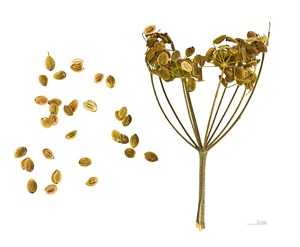
|
Pastinaca sativa |
https://en.wikipedia.org/wiki/Parsnip
true
Moist
Full sun, Partial sun/shade
4-8
Wild parsnip
Light (sandy), Medium, Heavy (clay)
Apiaceae or umbelliferae
1.0
Pastinake
Roots
Leaves, Root, Seed, Shoots
Weed potential
Biennial
https://pfaf.org/User/Plant.aspx?LatinName=Pastinaca sativa
Sicilia
Albania, Altay, Austria, Baltic States, Belarus, Belgium, Bulgaria, Central European Rus, Corse, Czechoslovakia, East European Russia, France, Germany, Great Britain, Greece, Hungary, Italy, Krasnoyarsk, Krym, Lebanon-Syria, Mongolia, Netherlands, North Caucasus, Poland, Romania, Sardegna, South European Russi, Spain, Switzerland, Transcaucasus, Turkey, Turkey-in-Europe, Ukraine, West Siberia, Yugoslavia
https://powo.science.kew.org/taxon/urn:lsid:ipni.org:names:845768-1
0.4
Condiment
Pest control
|
Show
Edit |
|

|
Rose |
2
Perennial
Full sun, Partial sun/shade
Deciduous
Shrubs
Animal feed, Attracts insects, Hedgerow, Wind breaker, Wildlife habitat
True
Fruit
Rosaceae
Zambia
https://powo.science.kew.org/taxon/urn:lsid:ipni.org:names:77120313-1
1
|
Show
Edit |
|
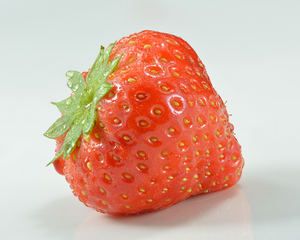
|
Strawberry |
4-8
Perennial
Full sun, Partial sun/shade
Moist
Light (sandy), Medium, Heavy (clay)
0.3
Herbs
Ground cover
True
Fruit, Leaves
https://en.wikipedia.org/wiki/Strawberry
Rosaceae
Erdbeere
https://pfaf.org/User/Plant.aspx?LatinName=Fragaria x ananassa
Aardbei
Jordbær
British Columbia, California, Oregon, Washington
Albania, Baltic States, Belarus, Central European Rus, Denmark, East European Russia, El Salvador, Finland, France, Germany, Great Britain, Guatemala, Honduras, Illinois, Ireland, Italy, Japan, Korea, Netherlands, New York, North European Russi, Northwest European R, Norway, Pitcairn Is., South European Russi, Sweden, Switzerland, Tadzhikistan, Turkey, Turkmenistan, Vermont
0.3
https://powo.science.kew.org/taxon/urn:lsid:ipni.org:names:30117681-2
|
Strawberry (Fragaria × ananassa) is a popular fruit-bearing plant that is native to parts of the Americas, Europe, and Asia. It is a member of the Rosaceae family and is closely related to other fruit-bearing plants such as raspberries and blackberries. The plant has a low-growing, spreading habit, with leaves that are typically green and glossy, and white flowers that give way to red, juicy berries. The fruits are edible and are often eaten fresh, used in jams and jellies, or baked in desserts. Strawberry plants prefer well-draining, moist soil and plenty of sunlight. They can be grown in a variety of climates, but they tend to thrive in temperate regions with cool summers and mild winters. To cultivate the plants successfully, a grower may need to provide adequate irrigation, fertilizer, and pest control. One of the distinctive features of strawberry plants is their runners, which are long, slender stems that grow horizontally along the ground. These runners can be used to propagate new plants, which can be grown in rows or beds to form a dense, ground-covering mat. In addition to their value as a food source, strawberry plants are also prized for their attractiveness to pollinators and other beneficial insects. They are often used in home gardens and on small farms as a way to attract bees, butterflies, and other insects that help to pollinate other plants. Overall, strawberries are a versatile and valuable plant that is prized by gardeners and farmers alike for their delicious fruit and their ability to attract wildlife. |
Show
Edit |
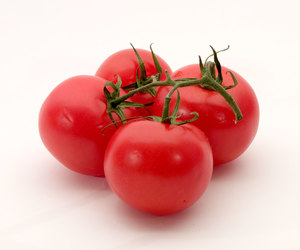
|
Tomato |
10-12
Annual, Perennial
Full sun
Moist
Light (sandy), Medium, Heavy (clay)
2.0
True
Fruit, Seed
https://en.wikipedia.org/wiki/Tomato
Fast
Garden tomato, Dumádu, Garden tomato, Love apple, Lycopersicum esculentum, Tomate, Tomato, Tomato extract containing lycopene, Tomato|thakkali, Tumatis, Lycopersicon esculentum
Solanaceae
Tomate
Oil
https://pfaf.org/User/Plant.aspx?LatinName=Solanum lycopersicum, https://pfaf.org/User/Plant.aspx?LatinName=Lycopersicon esculentum
Start seeds indoors 5-6 weeks before last frost
In containers or in rows in beds around last frost date
6.2-6.8
70-80°f
Peru
Alabama, Alaska, Andaman Is., Angola, Arizona, Arkansas, Assam, Austria, Azores, Bahamas, Bangladesh, Belarus, Benin, Bolivia, British Columbia, Bulgaria, Burkina, California, Cambodia, Cameroon, Canary Is., Cape Verde, Caroline Is., Central African Repu, Chagos Archipelago, Chatham Is., Christmas I., Colombia, Comoros, Connecticut, Cook Is., Costa Rica, Cuba, Cyprus, Czechoslovakia, Delaware, Dominican Republic, East Aegean Is., East European Russia, East Himalaya, Ecuador, Fiji, Florida, Galápagos, Georgia, Gilbert Is., Gulf of Guinea Is., Haiti, Hawaii, Illinois, India, Indiana, Iowa, Ivory Coast, Jawa, Kansas, Kazakhstan, Kentucky, Korea, Laccadive Is., Laos, Leeward Is., Line Is., Louisiana, Madagascar, Madeira, Maine, Malawi, Mali, Marianas, Marquesas, Marshall Is., Maryland, Massachusetts, Mauritania, Mauritius, Michigan, Mississippi, Missouri, Montana, Mozambique, Myanmar, Namibia, Nansei-shoto, Nauru, Nebraska, Nepal, Nevada, New Brunswick, New Caledonia, New Hampshire, New York, New Zealand North, Nicaragua, Nicobar Is., Niue, North Carolina, North Dakota, Nova Scotia, Ogasawara-shoto, Ohio, Ontario, Oregon, Pakistan, Panamá, Pennsylvania, Philippines, Pitcairn Is., Puerto Rico, Québec, Rhode I., Réunion, Saskatchewan, Selvagens, Society Is., South Carolina, South European Russi, Tadzhikistan, Taiwan, Tennessee, Texas, Trinidad-Tobago, Tuamotu, Tubuai Is., Turkey, Turkmenistan, Tuvalu, Utah, Uzbekistan, Venezuela, Vermont, Vietnam, Virginia, Wake I., Wisconsin, Zambia, Zaïre, Zimbabwe
1.00
https://powo.science.kew.org/taxon/urn:lsid:ipni.org:names:316947-2
|
The tomato is a flowering plant native to South America. It is a member of the nightshade family and closely related to the potato. The tomato plant typically grows to a height of 1-3 meters and has a weak, hairy stem. The leaves are arranged alternately on the stem and are typically dark green in color. The plant produces small yellow or white flowers, which develop into the fruit we know as tomatoes. The fruit itself is typically red, but can also be yellow, orange, green, or purple. Indeterminate tomato plants are perennials in their native habitat, but are cultivated as annuals. Determinate, or bush, plants are annuals that stop growing at a certain height and produce a crop all at once. Tomatoes prefer warm, sunny growing conditions and well-drained, humus-rich soil. They can be grown in a variety of soil types, but perform best in soil with a pH between 6 and 6.8. In order to cultivate tomatoes successfully, growers may need to provide support for the plant (such as a stake or cage) to prevent the fruit from weighing down the stem, and may also need to water and fertilize the plant regularly. Tomatoes are generally considered to be frost-sensitive, so in areas with cold winters they may need to be grown in a greenhouse or indoors. There are a great number of cultivars. The edible parts of the tomato plant are the fruit and the leaves. The fruit can be eaten raw or cooked, and is commonly used in a variety of dishes, such as salads, sandwiches, and pasta. The leaves, although not commonly eaten, are also edible and have a slightly bitter taste. After harvest, tomatoes can be stored at room temperature, in a cool place, or in the refrigerator. |
Show
Edit |
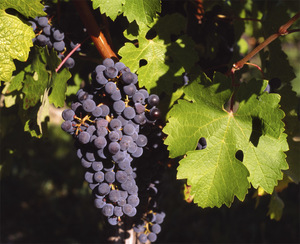
|
Common Grape Vine |
6-10
Perennial
Full sun, Partial sun/shade
Dry, Moist
Light (sandy), Medium, Heavy (clay)
Deciduous
15-32m
Vines
True
Flowers, Fruit, Leaves, Seed
Seed - direct sow, Cuttings
https://en.wikipedia.org/wiki/Vitis_vinifera
Fast
Wine grape, Purpleleaf grape, Common grape, Angur, Diva loza, Grozde yagorida, Tumpeang ba'y chu, Uva, Vid, Vigne, Vino, Weinrebe, Aanab, Ainab, Aitoviiniköynnös, Lehti, Angoor, Angur, Blad från vinranka, Bortermo szolo levél, Cognac oil, Common grape vine, Dakh, Darakh, Drakh, Draksa, Draksh, Draksha, Draksha kottai, Draksha pondu, Drakshai, Drakya, Dry grapes, Drak?a (fruit), European grape, Feuille de vigne rouge, Folha de videira, Frunze de vita-de-vie, Gostani, Gostoni, Grape, Grape seeds oligomeric proanthocyanidins, Grape vine, Grapevine, Grapevine leaf, Kashmish, Kishmish, Kottai drakshai, Lambrusca, Lambrusque, Lie de vin, List vinica, List vinske trte, Lisc winorosli wlasciwej, Maneka, Maweez munaqqa, Maweezak kohi, Munaca, Munaqqa, Munkka, Munthringya, M?dvika, Parra, Raisins, Rote weinrebenblätter, Rød vinranke, Blad, Tikruju vynmedžiu lapai, Vid, Hoja de, Vigne, Vigne rouge, Vigne vinifère, Viinapuu lehed, Vinblad, Vine, Vinho, Vino, Vite, Foglia, Vitis vinifera, Flos, Vitis viniferae folium, Vínviðarlauf, Weinrebe, Werqa tad-dielja, Wijnstokblad, Wine, Wine grape, Zabeeb-ul-jabal, Cervený list vinné révy, Ista vinkoka lapas
Vitaceae
Weintraube
Oil
https://pfaf.org/user/plant.aspx?latinname=Vitis+Vinifera
Southern Europe, Central Europe, Southwestern asia , Albania, Austria, Bulgaria, Corse, Cyprus, Czechoslovakia, France, Germany, Greece, Hungary, Iran, Iraq, Italy, Kirgizstan, Krym, Lebanon-Syria, North Caucasus, Palestine, Romania, Sardegna, Sicilia, Switzerland, Tadzhikistan, Transcaucasus, Turkey, Turkey-in-Europe, Turkmenistan, Ukraine, Uzbekistan, Yugoslavia
4.3-8.6
Tap
0.6-6m
8feet
6 weeks
20°c (69°f)
12 months
False
Druif
Vindrue
Afghanistan, Algeria, Angola, Argentina Northeast, Azores, Baleares, Bangladesh, Belgium, British Columbia, California, Canary Is., Cape Verde, Caroline Is., Chad, China North-Central, China South-Central, China Southeast, East Aegean Is., East European Russia, East Himalaya, Easter Is., Ecuador, Eritrea, Ethiopia, Gulf of Guinea Is., Idaho, India, Kazakhstan, Korea, Kriti, Laos, Libya, Madeira, Massachusetts, Morocco, New Hampshire, New York, New Zealand North, Oregon, Pakistan, Pennsylvania, Peru, Poland, Portugal, South European Russi, Spain, Tibet, Trinidad-Tobago, Tunisia, Vietnam, Washington, West Himalaya
https://powo.science.kew.org/taxon/urn:lsid:ipni.org:names:30478388-2
1
|
This is the common grape which has a lot of varieties but only a few are grown (commercially). Common Grape Vine (Vitis vinifera) is a species of grapevine native to the Mediterranean region, central Europe, and southwestern Asia. It is a woody perennial vine that grows to a length of 20-30 feet when supported by a trellis or other structure. The leaves are dark green and palmately lobed, with five to nine leaflets. The flowers are small and greenish-white, and are produced in clusters. The fruit is a berry, typically blue or purple in color, and is edible. In terms of growth and cultivation, Common Grape Vine prefers full sun and well-draining soil. It can be grown from cuttings or from grape seeds, and should be trained to a trellis or other support structure. In order to produce fruit, the plant must be cross-pollinated with another grapevine of a different variety. The fruit is typically harvested in the late summer or early fall. The edible fruit of the Common Grape Vine can be eaten fresh or used to make wine, juice, and other products. The fruit can be stored by freezing or canning. The leaves can also be eaten, and are commonly used in dishes such as dolma. In addition to its edible fruit, the Common Grape Vine has several other uses. The leaves can be used as a source of natural dye, and the wood can be used for fuel or to make furniture and other items. The plant also provides habitat and food for a variety of wildlife, including birds and small mammals. Fruits are used to be eaten fresh or used for producing juice, wine or vinegar. Raisins are made out of dried grapes. Leaves and flowers can be eaten too. Seeds are used to produce oil. # Propagation While propagation from seed is possible, propagating from cuttings or grafting is way more common and simple. |
Show
Edit |

|
Apple |
3-8
Full sun, Partial sun/shade
Moist
Light (sandy), Medium, Heavy (clay)
Deciduous
10.0
9
Perennial
Trees
Animal feed, Attracts insects, Hedgerow
True
Fruit
Oil
Appel
Æble
Rosaceae
Malus
Afghanistan, Kazakhstan, Kirgizstan, Pakistan, Tadzhikistan, Uzbekistan, Xinjiang
Alabama, Alaska, Albania, Argentina Northeast, Argentina South, Arkansas, Azores, Baleares, Baltic States, Belarus, Belgium, British Columbia, Bulgaria, California, Central European Rus, Colorado, Connecticut, Cyprus, Czechoslovakia, Delaware, Denmark, District of Columbia, East European Russia, East Himalaya, Ecuador, Falkland Is., Finland, France, Georgia, Germany, Great Britain, Greece, Hungary, Illinois, Indiana, Iowa, Iraq, Ireland, Italy, Kansas, Kentucky, Korea, Krym, Louisiana, Madeira, Maine, Manitoba, Maryland, Massachusetts, Michigan, Minnesota, Mississippi, Missouri, Montana, Nebraska, Nepal, Netherlands, Nevada, New Brunswick, New Hampshire, New Jersey, New Mexico, New South Wales, New York, Newfoundland, North Carolina, North Caucasus, North Dakota, Norway, Nova Scotia, Ohio, Ontario, Oregon, Pennsylvania, Poland, Prince Edward I., Québec, Rhode I., Romania, South Carolina, South European Russi, Spain, Sweden, Tasmania, Tennessee, Turkmenistan, Ukraine, Utah, Vermont, Victoria, Virginia, West Virginia, Wisconsin, Wyoming, Yugoslavia
https://en.wikipedia.org/wiki/Apple
https://pfaf.org/user/plant.aspx?LatinName=Malus+domestica
https://powo.science.kew.org/taxon/urn:lsid:ipni.org:names:726282-1
Apfel
|
An apple is an edible fruit produced by an apple tree (Malus domestica). Apple trees are cultivated worldwide and are the most widely grown species in the genus Malus. The tree originated in Central Asia, where its wild ancestor, Malus sieversii, is still found today. Apples have been grown for thousands of years in Asia and Europe and were brought to North America by European colonists. Apples have religious and mythological significance in many cultures, including Norse, Greek, and European Christian tradition. Apples grown from seed tend to be very different from those of their parents, and the resultant fruit frequently lacks desired characteristics. Generally, apple cultivars are propagated by clonal grafting onto rootstocks. Apple trees grown without rootstocks tend to be larger and much slower to fruit after planting. Rootstocks are used to control the speed of growth and the size of the resulting tree, allowing for easier harvesting. There are more than 7,500 known cultivars of apples. Different cultivars are bred for various tastes and uses, including cooking, eating raw, and cider production. Trees and fruit are prone to a number of fungal, bacterial, and pest problems, which can be controlled by a number of organic and non-organic means. In 2010, the fruit's genome was sequenced as part of research on disease control and selective breeding in apple production. Worldwide production of apples in 2018 was 86 million tonnes, with China accounting for nearly half of the total. From [Wikipedia](https://en.wikipedia.org/wiki/Apple) |
Show
Edit |

|
Asparagus |
2-9
Full sun, Partial sun/shade
Moist
Light (sandy), Medium, Heavy (clay)
6.5-7.0
Evergreen
1-1.5m
1
Perennial
Herbs
Slow
12-18 inches rows, 6–8inches in row
Seed - direct sow, Seed - transplant, Division
16 weeks before last frost date
10-12 weeks, 1 week after last frost date
2-8 weeks
21-29°c (70-85°f)
true
Shoots, Stem
Sparrow grass
Spargel
Asparagaceae
Europe, Western asia, Afghanistan, Albania, Altay, Austria, Belarus, Bulgaria, Central European Rus, Corse, Czechoslovakia, France, Germany, Greece, Hungary, Iran, Kazakhstan, Krasnoyarsk, Krym, Lebanon-Syria, Mongolia, North Caucasus, Pakistan, Poland, Sicilia, South European Russi, Switzerland, Transcaucasus, Turkey, Turkey-in-Europe, Ukraine, West Siberia, Xinjiang
Alabama, Alberta, Algeria, Argentina Northeast, Argentina Northwest, Argentina South, Arizona, Arkansas, Baltic States, Bangladesh, Belgium, Bolivia, British Columbia, California, Colorado, Connecticut, Costa Rica, Cyprus, Delaware, Denmark, District of Columbia, East European Russia, East Himalaya, Ethiopia, Finland, Florida, Georgia, Great Britain, Idaho, Illinois, Indiana, Iowa, Ireland, Kansas, Kentucky, Labrador, Louisiana, Madagascar, Maine, Manitoba, Marianas, Maryland, Massachusetts, Mauritius, Mexico Central, Mexico Gulf, Mexico Northeast, Mexico Southeast, Mexico Southwest, Michigan, Minnesota, Mississippi, Missouri, Montana, Morocco, Nebraska, Netherlands, Nevada, New Brunswick, New Hampshire, New Jersey, New Mexico, New South Wales, New York, New Zealand North, New Zealand South, Newfoundland, North Carolina, North Dakota, North European Russi, Northwest European R, Norway, Nova Scotia, Ohio, Oklahoma, Ontario, Oregon, Pennsylvania, Portugal, Prince Edward I., Queensland, Québec, Rhode I., Réunion, Sardegna, Saskatchewan, Seychelles, Solomon Is., South Australia, South Carolina, South Dakota, Spain, Sweden, Tasmania, Tennessee, Texas, Trinidad-Tobago, Tunisia, Uruguay, Utah, Vermont, Victoria, Virginia, Washington, West Himalaya, West Virginia, Western Australia, Wisconsin, Wyoming
True
https://en.wikipedia.org/wiki/asparagus
https://pfaf.org/user/plant.aspx?latinname=asparagus officinalis
https://powo.science.kew.org/taxon/urn:lsid:ipni.org:names:531229-1
Fasciculated
3-8inches
8-12 weeks before last frost
Toxic fruits
Coffee
Pest control
|
Asparagus officinalis is a plant native to most of Europe, northern Africa, and western Asia. It is a herbaceous perennial plant that typically grows to around 0.5 to 1.5 meters in height, with slender stems and feathery leaves. The stems are typically green, but some varieties can have purple or white stems. The plant produces small, fragrant white or pink flowers in the spring, which give way to red berries in the fall, which are toxic to humans. Asparagus is a fast-growing plant that prefers well-draining, fertile soil and full sun exposure. It can grow in saline soils where other plants to do not grow. A soil pH below 6 is possible but best is to adjust to 6.5-7.0. It can be grown from seed or from crowns, and typically takes 2-3 years to reach maturity and begin producing edible shoots, which can be harvested for around 8-12 weeks each season. In cold climates, asparagus is winter hardy and can be left in the ground to overwinter. In warmer climates, it may need to be dug up and stored in a cool, dry place during the winter months. The edible shoots of asparagus can be harvested in the spring and early summer. They can be eaten raw or cooked, and have a delicate, slightly sweet flavor. The shoots can be stored in the refrigerator for a few days, but are best used fresh. Asparagus is a low-calorie, nutrient-dense vegetable, with high levels of vitamins A, C, and K, as well as folate and fiber. In addition to its use as a food, asparagus has a number of other uses. It is often used medicinally to treat a variety of conditions, including digestive disorders and urinary tract infections. The plant's leaves and stems can be used as mulch or compost, and the roots can help to fix nitrogen in the soil, making it useful for improving soil health. Asparagus has also been used as a weaving material and as a building material, due to its strength and durability. Asparagus is a valuable plant for wildlife, providing food and habitat for a variety of animals. The plant's flowers attract bees and other pollinators, and the berries are eaten by birds and small mammals. Asparagus is a good companion plant to the Tomato since it repels some harmful root nematodes for Tomatoes and Tomatoes repel the asparagus beetle. |
Show
Edit |
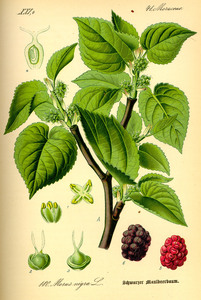
|
Black mulberry |
5-9
Full sun, Partial sun/shade
Moist
Light (sandy), Medium, Heavy (clay)
Deciduous
10.0
4.5
Perennial
Trees
Slow
Dye, Fiber, Lumber
true
Fruit, Shoots
Mulberry, Morus species
Schwarze maulbeere
Moraceae
Iran
Afghanistan, Albania, Algeria, Bermuda, Bulgaria, Canary Is., Cuba, Greece, India, Iraq, Italy, Kazakhstan, Kirgizstan, Kriti, Lebanon-Syria, Leeward Is., Libya, Madeira, Morocco, Puerto Rico, Romania, Spain, Tadzhikistan, Transcaucasus, Tunisia, Turkey, Turkmenistan, Uzbekistan, Vietnam, West Himalaya, Windward Is., Xinjiang
https://en.wikipedia.org/wiki/Morus_nigra
https://pfaf.org/User/Plant.aspx?LatinName=Morus nigra
https://powo.science.kew.org/taxon/urn:lsid:ipni.org:names:854688-1
|
The black mulberry (Morus nigra) is a species of mulberry native to southwestern Asia, including Iran, Afghanistan, and Pakistan. It is a small to medium-sized tree that grows to be about 20-30 feet tall and has a round, dense canopy. The leaves of the black mulberry are dark green and glossy on the top, and paler and slightly hairy on the bottom. The tree produces small, white flowers in the spring, which are followed by black, juicy fruits in the summer. The black mulberry is relatively fast-growing and can reach its full size in about 10-15 years. It prefers well-drained, fertile soil and full sun, but can tolerate partial shade. It is also winter hardy and can withstand temperatures down to about -10°F. The fruits of the black mulberry are edible and can be eaten fresh or used in jams, jellies, and other preserves. They can also be dried and stored for later use. The leaves of the black mulberry can be fed to silkworms, and the wood of the tree is strong and durable, making it suitable for a variety of uses. In addition to its edible fruits, the black mulberry has several other uses. Its leaves can be used as a natural fertilizer, and the tree can provide shade and wind protection in gardens and farms. The black mulberry is also a popular food source for birds and other wildlife. |
Show
Edit |
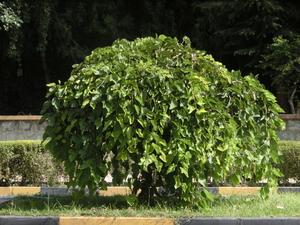
|
White mulberry |
3-9
Full sun, Partial sun/shade
Moist
Light (sandy), Medium, Heavy (clay)
Deciduous
18
13
Perennial
Trees
Medium
Biomass, Dye, Fiber, Animal feed, Wind breaker, Tannin, Lumber
true
Fruit, Inner bark, Leaves, Shoots
Common mulberry
Weiße Maulbeere
Moraceae
Angola, Benin, Cameroon, Central African Repu, Congo, Equatorial Guinea, Gabon, Ghana, Guinea, Guinea-Bissau, Ivory Coast, Kenya, Liberia, Mauritania, Namibia, Nigeria, Senegal, Sierra Leone, Tanzania, Uganda, Zaïre
https://en.wikipedia.org/wiki/Morus_alba
https://pfaf.org/User/Plant.aspx?LatinName=Morus alba
https://powo.science.kew.org/taxon/urn:lsid:ipni.org:names:547653-1
Weed potential
Manna, Tea
|
The white mulberry is a deciduous tree native to northern China, Korea, and Japan. It has large, heart-shaped leaves and small, white or pale pink flowers that grow in clusters. The tree can grow to be quite large, up to 50 feet tall, and it is fast-growing. White mulberry trees can be differentiated from other mulberry trees by their white, rather than dark purple, fruit. White mulberry trees prefer well-draining soil and full sun, but can tolerate partial shade. They are drought-tolerant and can thrive in a variety of soil types. In colder climates, they may need to be protected from frost during the winter months. The fruit of the white mulberry tree is edible and is often used to make jams, jellies, and wines. The fruit can be stored by freezing or canning. Young leaves can also be eaten. White mulberry trees are valued for their fast growth and ability to provide shade. They can be used for wind protection and as a ground cover. The leaves of the tree are sometimes used as animal feed. In some cultures, the bark of the white mulberry tree is used medicinally. Leaves are not frost resistant. |
Show
Edit |
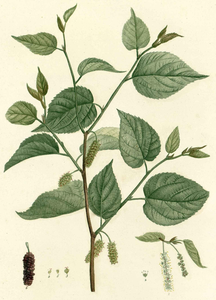
|
Red mulberry |
4-9
Full sun, Partial sun/shade
Moist
Light (sandy), Medium, Heavy (clay)
15.0
4.5
Perennial
Trees
true
Fruit, Leaves, Shoots
Common mulberry, white mulberry
Rote maulbeere
Moraceae
Alabama, Arkansas, Connecticut, District of Columbia, Florida, Georgia, Illinois, Indiana, Iowa, Kansas, Kentucky, Louisiana, Maryland, Massachusetts, Michigan, Minnesota, Mississippi, Missouri, Nebraska, New Jersey, New York, North Carolina, Ohio, Oklahoma, Ontario, Pennsylvania, Rhode I., South Carolina, Tennessee, Texas, Vermont, Virginia, West Virginia, Wisconsin
Bermuda, New Mexico, Turkey, Turkey-in-Europe
https://en.wikipedia.org/wiki/Morus_rubra
https://pfaf.org/User/Plant.aspx?LatinName=Morus rubra
https://powo.science.kew.org/taxon/urn:lsid:ipni.org:names:854710-1
1.5
Fiber, Lumber
|
The Red mulberry, Morus rubra, is native to the eastern United States and Canada. It is a deciduous tree that can grow to a height of up to 80 feet. The leaves are dark green and have a rough texture. The tree produces small, greenish-white flowers in the spring, which develop into clusters of red berries in the summer. The Red mulberry is often differentiated from other mulberry species by its smaller leaves and red berries. It prefers well-drained, moist soil and partial to full sun exposure. It is winter hardy and does not require any special care or maintenance. The fruit of the Red mulberry is edible and can be eaten fresh or used in cooking and baking. The berries can be stored in the refrigerator for up to a week. The tree also has a number of medicinal uses, including as a laxative and for treating sore throat and bronchitis. In terms of wildlife, the Red mulberry is a valuable food source for a variety of birds and mammals. Its fruit is a popular food source for birds such as robins, mockingbirds, and blue jays. The tree also provides habitat for birds and small mammals. |
Show
Edit |
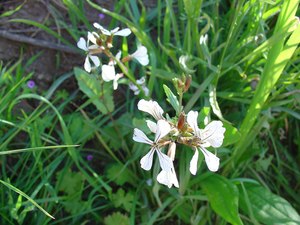
|
Rocket |
6-9
Annual
Full sun, Partial sun/shade
Dry, Moist
Light (sandy), Medium, Heavy (clay)
0.6
Flowers, Leaves
Seed - direct sow, Seed - transplant
Fast
Brassicaceae or Cruciferae
Oil, Condiment
https://pfaf.org/User/Plant.aspx?LatinName=Eruca vesicaria sativa
in spring
25°C
1-3 days
start indoors in pots at a depth
Arugula
Rucola
0.3
oil
true
|
Rocket, also known as Eruca vesicaria sativa, is a plant native to the Mediterranean region. It is a small, annual plant that typically grows to be about 20-30 cm tall. It has long, narrow leaves that are a pale green color, and small white or yellow flowers. The plant grows quickly and can be differentiated from similar plants by its unique leaf shape. Leaves can be harvested after 3-6 weeks. Rocket prefers to grow in well-drained soil in full sun or partial shade. It likes to grow along tracks, on waste grounds or stony places. To cultivate it successfully, a grower will need to ensure that the soil is moist but not waterlogged, and will also need to protect the plant from extreme temperatures, especially frost. Rocket is not particularly winter hardy, so it may need to be grown in a greenhouse or indoors in colder climates. Rocket is edible, and both the leaves and the seeds can be eaten. The leaves have a spicy, peppery flavor and can be used in salads or cooked dishes. The seeds ripen from July to September and can be roasted and used as a flavoring for dishes or as a garnish. After harvest, the leaves can be stored in the refrigerator for a few days, while the seeds can be stored in an airtight container in a cool, dry place for several months. Rocket has several uses beyond its edible parts. It has been used medicinally as a digestive aid and to treat respiratory problems. Rocket is also valuable for wildlife, as it provides food and shelter for a variety of species. Its flowers attract pollinators such as bees and butterflies, and its seeds are a source of food for birds |
Show
Edit |
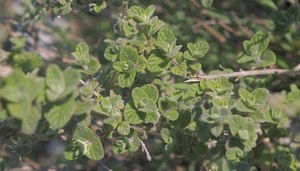
|
Origanum vulgare |
4-10
Full sun, Partial sun/shade
Dry, Moist
Light (sandy), Medium, Heavy (clay)
4.5–8.7
0.6
0.6
Perennial
Herbs
Medium
20cm
true
Flowers, Leaves, Stem
Condiment, Tea
Pot Marjoram
Lamiaceae or Labiatae
Afghanistan, Albania, Algeria, Altay, Austria, Azores, Baleares, Baltic States, Belarus, Belgium, Bulgaria, Buryatiya, Canary Is., Central European Rus, China North-Central, China South-Central, China Southeast, Corse, Cyprus, Czechoslovakia, Denmark, East Aegean Is., East European Russia, East Himalaya, Finland, France, Germany, Great Britain, Greece, Hungary, India, Iran, Iraq, Ireland, Irkutsk, Italy, Kazakhstan, Kirgizstan, Krasnoyarsk, Kriti, Krym, Madeira, Morocco, Nepal, Netherlands, North Caucasus, North European Russi, Northwest European R, Norway, Pakistan, Poland, Portugal, Romania, Sardegna, Sicilia, South European Russi, Spain, Svalbard, Sweden, Switzerland, Tadzhikistan, Taiwan, Tibet, Transcaucasus, Tunisia, Turkey, Turkey-in-Europe, Turkmenistan, Tuva, Ukraine, Uzbekistan, West Himalaya, West Siberia, Xinjiang, Yakutskiya, Yugoslavia
Arkansas, British Columbia, California, Connecticut, Delaware, Illinois, Maryland, Massachusetts, Mexico Southwest, Michigan, New Jersey, New York, New Zealand South, North Carolina, Nova Scotia, Ohio, Ontario, Oregon, Pennsylvania, Primorye, Prince Edward I., Québec, Venezuela, Vermont, Virginia, Washington
https://en.wikipedia.org/wiki/Oregano
https://pfaf.org/User/Plant.aspx?LatinName=Origanum vulgare
https://powo.science.kew.org/taxon/urn:lsid:ipni.org:names:453395-1
best in late Spring; softwood cuttings root fastest
true
Dye, Essential Oil, Pest control, Strewing, Dynamic accumulator, Ground cover, Fragrance
|
Oregano, also known as Origanum vulgare, is a herb that is native to the Mediterranean region. It is a small, bushy plant that grows to a height of about 1 to 2 feet and has a woody stem. The leaves are oval-shaped and are covered in small hairs. The flowers are small and white or purple in color and grow in clusters. Oregano grows best in well-drained, fertile soil in a sunny location. It is winter hardy and can withstand cold temperatures. To cultivate oregano successfully, a grower may need to provide adequate watering and sunlight, and may also need to prune the plant regularly to keep it from becoming leggy. The leaves of the oregano plant are edible and can be used fresh or dried in cooking. They have a strong, pungent flavor and are commonly used in Italian, Greek, and Mexican cuisine. The leaves can be stored after harvest by drying them and storing them in an airtight container. In addition to its use in cooking, oregano has also been used in traditional medicine to treat a variety of conditions, including respiratory problems and digestive issues. It is also known to attract pollinators, making it valuable for wildlife. |
Show
Edit |